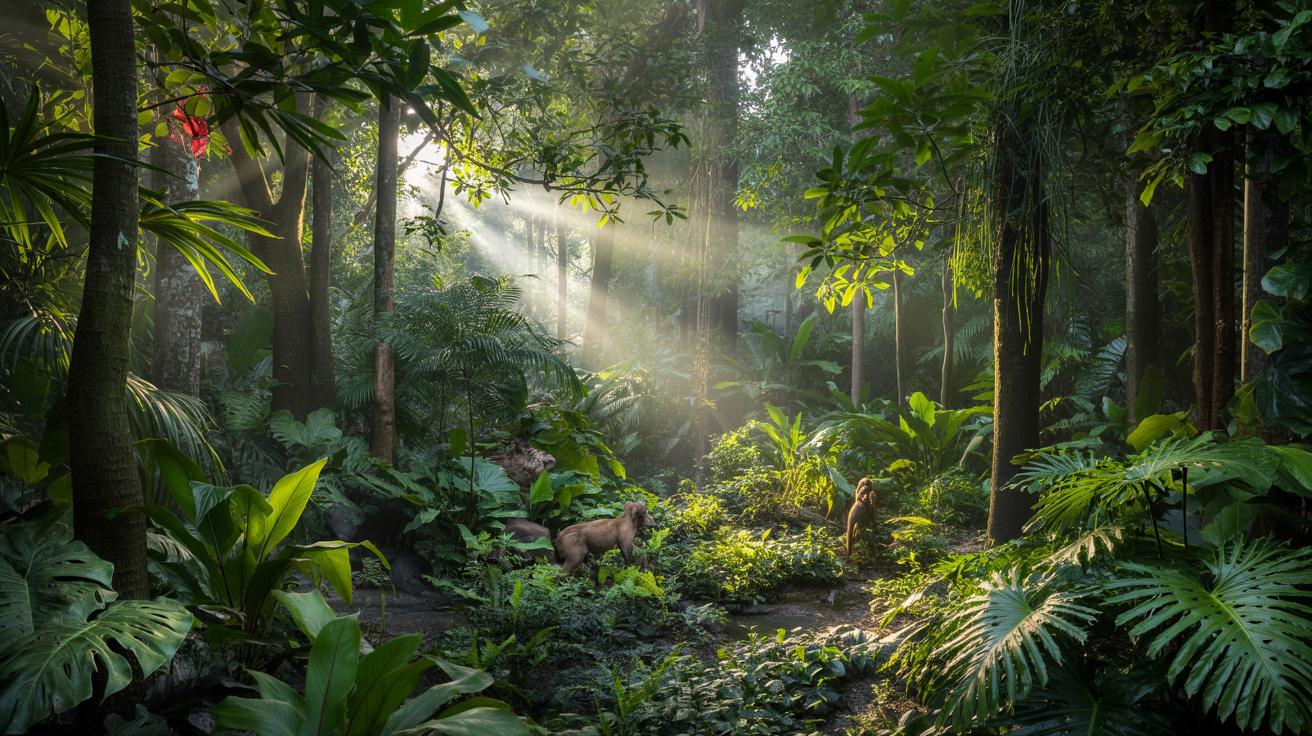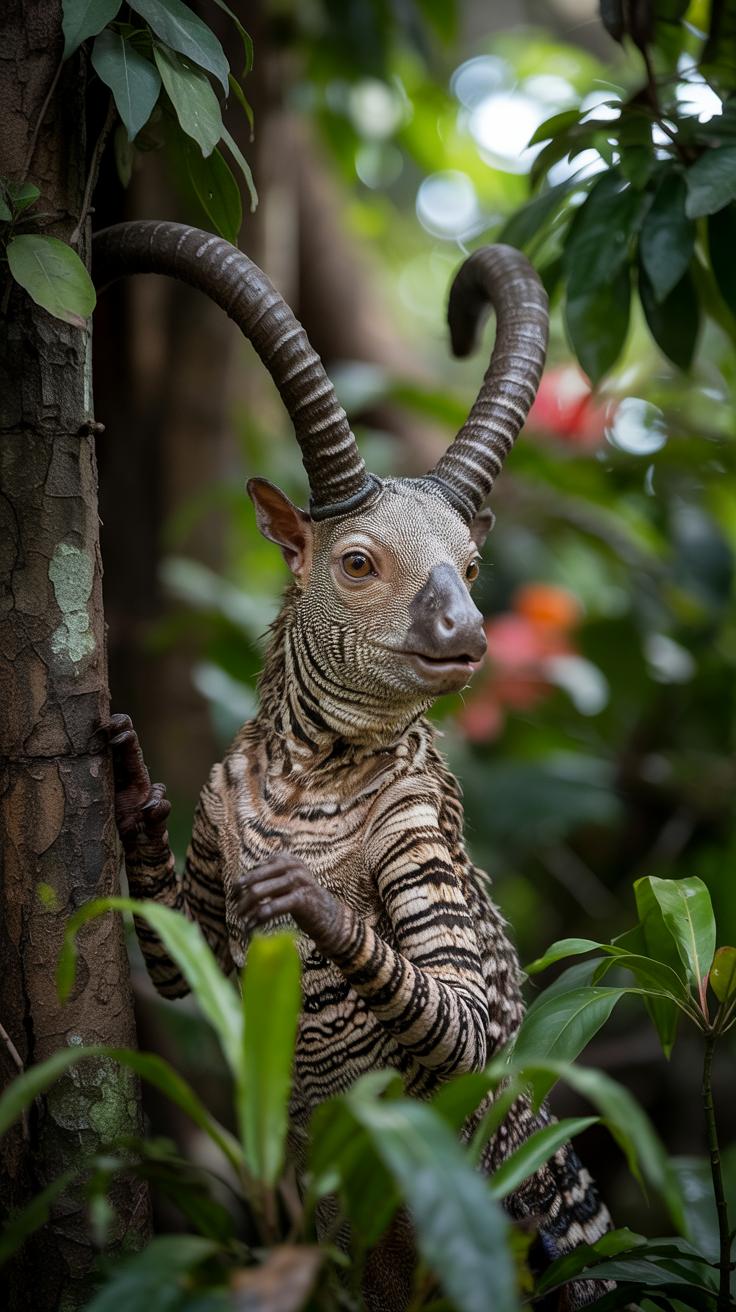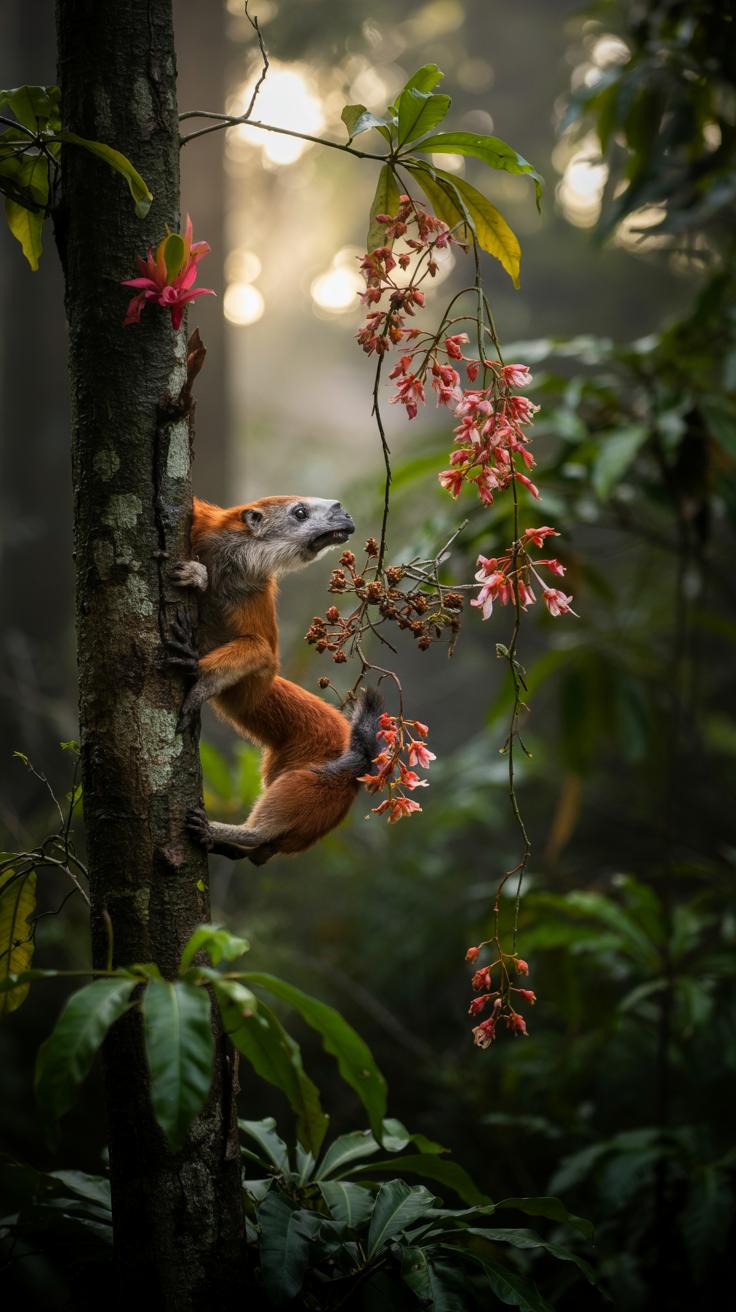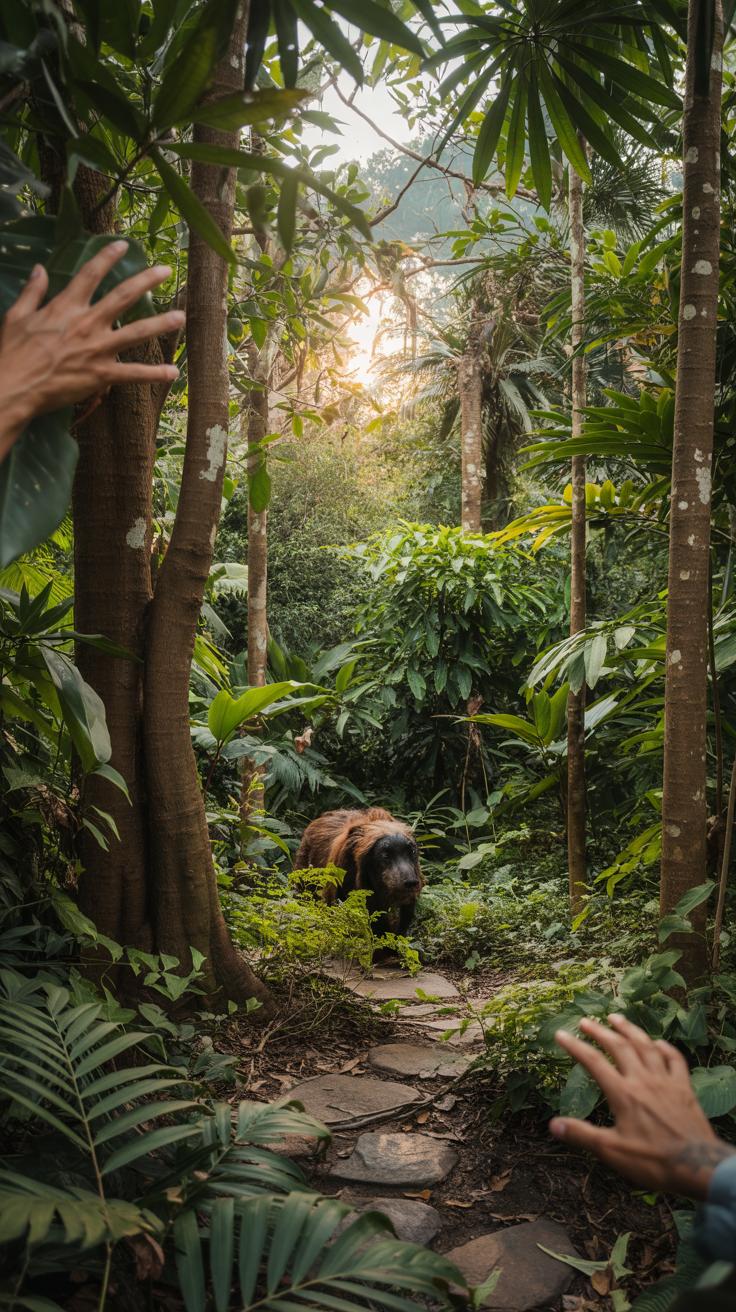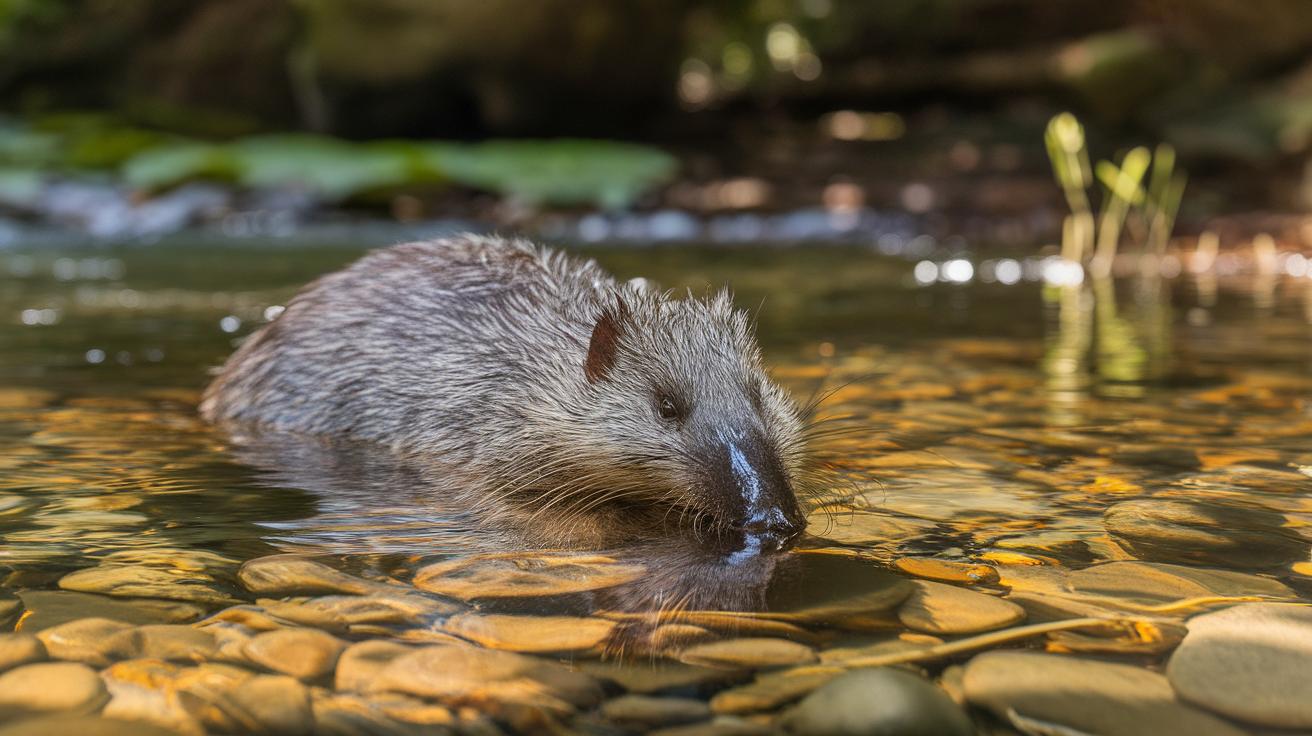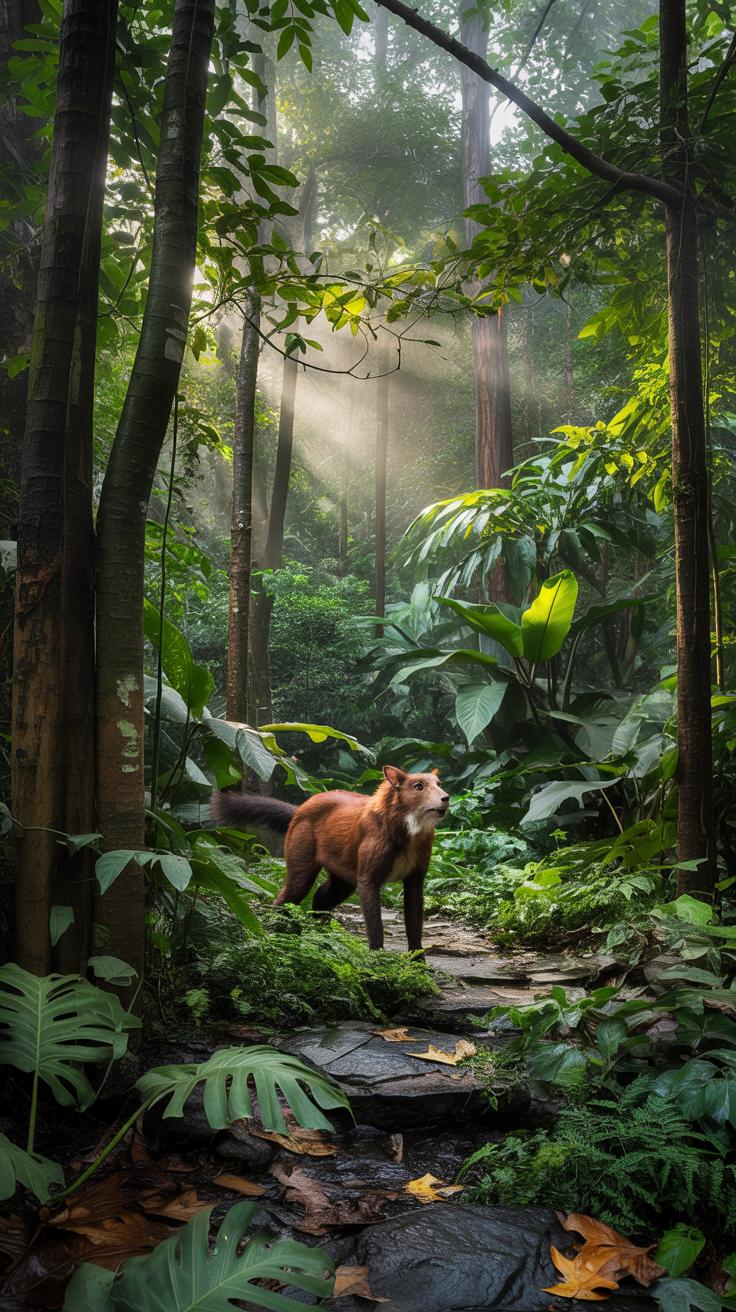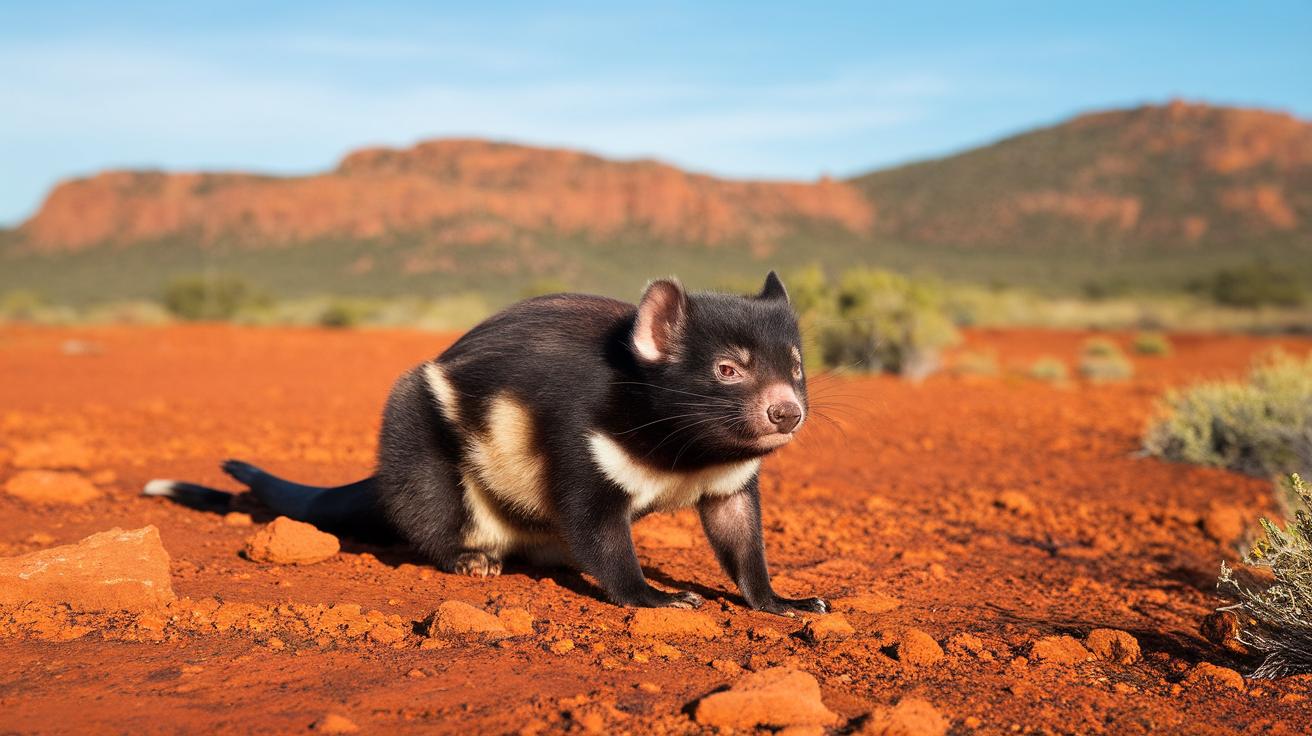Introduction
Rainforests are vibrant ecosystems teeming with life, home to an astonishing variety of animals and plants. Representing approximately 40% to 75% of all biotic species on Earth, these forests are renowned for their closed canopies and rich biodiversity. Within these lush environments, every layer, from the emergent to the forest floor, hosts unique species, allowing for complex interdependencies among flora and fauna. This article delves into the fascinating world of rainforest animals, discussing their adaptations, habits, and the significant roles they play in their ecosystems.
As habitats facing severe threats from deforestation and climate change, rainforests are crucial to the planet’s health. The animals residing in these forests perform essential functions that help maintain ecological balance, particularly in nutrient cycling and pollination. This article will explore various species, their unique adaptations, and their contributions to maintaining the biodiversity and integrity of these ecosystems, aiming to raise awareness of the importance of conserving these vital habitats.
Understanding Rainforests
Characteristics and Significance of Rainforests
The rainforest biome is distinguished by its lush vegetation, high rainfall, and warm temperatures year-round, creating a unique environment that fosters remarkable biodiversity. Rainforests are divided into tropical and temperate types, with tropical rainforests receiving over 2000 mm of rainfall annually, thriving near the equator. The structure of these forests consists of various layers: the emergent layer, the canopy, the understory, and the forest floor, each supporting distinct life forms. Such diversity contributes significantly to global ecological health; they play a vital role in carbon sequestration, oxygen production, and habitat for countless species. This makes rainforests indispensable not only for wildlife but also for human survival, underscoring the urgency of their conservation amidst ongoing threats like deforestation and climate change.
Layers of the Rainforest Understanding the Diverse Habitats and Their Inhabitants
The Emergent Layer: Creatures of the Skies
The emergent layer of the rainforest towers above the canopy, where sunlight floods the treetops. This habitat is home to some of the largest creatures, like the magnificent harpy eagle and the agile red-tailed monkey. Birds and insects soar through the skies, expertly navigating the winds. Exceptional adaptations such as broad wings and keen eyesight allow these animals to spot prey from great heights. The harpy eagle, for example, possesses powerful talons designed for grasping tree-dwelling mammals, while the monkeys have prehensile tails for navigating branches effortlessly. These adaptations highlight the successful survival strategies of creatures thriving in an environment defined by its height and openness.
The Understory Layer: Shadows of the Forest
The understory, characterized by lower light levels, supports a variety of insect life, reptiles, and mammals, such as jaguars and tree snakes. These animals have evolved to thrive in this dimly lit environment. For instance, jaguars possess excellent night vision, allowing them to hunt effectively after dark. Similarly, the green iguana’s coloration offers protection among the lush vegetation. With a humid atmosphere fostering a myriad of plant species, the understory layer serves as a crucial breeding ground for many animals, intricately linked to the survival of the entire rainforest ecosystem.
The Forest Floor: Life in the Shadows
Finally, the forest floor, often unexplored, is a bustling realm crucial to the rainforest’s health. Large mammals like tapirs and herbivores rummage through the foliage for food, while decomposers such as fungi and insects break down organic matter. These organisms play a vital role in nutrient cycling, ensuring that the environment remains vibrant and supports life. Adaptations of forest floor dwellers often include heightened senses of smell and hearing, which aid in navigation and avoiding predators. This dark, humid environment stands as a testament to the resilience and complexity of rainforest life, setting the stage for the fascinating inhabitants that will be highlighted in the next chapter.
The Forest Floor and Its Inhabitants
Crawling Through the Shadows of the Rainforest
Within the depths of the rainforest, the forest floor serves as a bustling habitat teeming with life. This dark, humid area, often shadowed by the towering canopy above, is home to a wide variety of organisms uniquely adapted to thrive in low light and rich, decaying matter. The soil is nutrient-rich, created by the constant decomposition of organic materials. This layer supports an intricate web of relationships among countless species.
Numerous insects, such as termites, ants, and vibrant beetles play crucial roles in the decomposition process, returning nutrients to the soil. Creatures like the jaguar and the tapir navigate this dense layer quietly, while amphibians such as poison dart frogs find refuge among fern leaves. Lizards, snails, and various rodents are also adept at maneuvering through this environment, utilizing camouflage or nocturnal activity to evade predators. Together, these inhabitants contribute to a complex ecosystem that underscores the resilience and interconnection of life within the rainforest.
Survival Strategies on the Forest Floor
The forest floor hosts a dynamic array of survival strategies. In this dimly lit realm, many animals exhibit a preference for a diet rich in decomposing vegetation. For instance, various fungi and plants provide sustenance for herbivores, while carnivorous species like the fer-de-lance snake lie in wait for unsuspecting prey. Adaptations such as vibrant coloration in insects serve as warnings to potential predators, while others, like the leafcutter ant, have perfected impressive foraging techniques to gather resources.
Reproductive strategies are also evident here, with many species employing camouflage to secure their young. The complex interplay of life on the forest floor highlights the extraordinary adaptations that allow species to flourish in such a seemingly inhospitable environment, preparing us for an examination of their fascinating adaptations in the upcoming chapter.
Unique Adaptations of Rainforest Animals Camouflage Diet and Reproductive Strategies
Camouflage and Survival Tactics
Rainforest animals have evolved remarkable adaptations that enable them to thrive in an environment characterized by dense foliage and vibrant biodiversity. Camouflage plays a crucial role in the survival of many species. For instance, the leaf-tailed gecko blends seamlessly into the forest floor, evading predators while also providing an advantage when stalking prey. The intricate patterns and colors of tree frogs not only help them hide from larger animals but also assist in attracting mates during breeding seasons. Such adaptations showcase the intersection of beauty and utility within the rainforest ecosystem.
Diverse Diet and Feeding Strategies
The dietary needs of rainforest animals reflect the complexity of their surroundings. Herbivorous species, such as sloths, have adapted a slow metabolism to efficiently digest foliage high in cellulose, allowing them to thrive on a diet of leaves. Conversely, carnivorous adaptations are shown by animals like jaguars, which possess strong jaws and exceptional climbing skills, enabling them to pursue various prey. Insects, such as the leaf-cutter ant, exhibit cooperative behavior when harvesting plant materials, leading to a complex symbiotic relationship with fungi. Such varied diets demonstrate how rainforest animals have tailored their feeding strategies to exploit their untamed world.
The Role of Rainforest Animals in Ecosystems Pollination and Seed Dispersal
The Impact of Animals on Rainforest Functions
Rainforest animals play a pivotal role in maintaining the delicate balance of their ecosystems. Diverse species fulfill essential functions such as pollination and seed dispersal, contributing significantly to plant reproduction and biodiversity. Birds, bats, and insects like butterflies are not just beautiful spectacles; they actively transport pollen from one bloom to another, facilitating the growth of fruit-bearing plants. This interaction supports various plant species, which in turn provide habitats and food sources for many other rainforest inhabitants.
Seed Dispersers: Nature’s Gardeners
Specific animals are particularly adept at seed dispersal. For instance, monkeys and toucans consume fruits and later excrete the seeds at different locations, allowing plants to colonize new areas. This behavior not only helps plants thrive but also enriches the genetic diversity of the rainforest. Efficient dispersers can even adapt to various flora, ensuring the survival of species in a rapidly changing environment. The intricate relationships formed between these animals and plants reveal the natural world’s complexity and interconnectedness, showcasing how vital these creatures are to rainforest health.
Threats to Rainforest Animals Identifying Major Dangers
Habitat Destruction and Its Impact
Habitat destruction poses one of the gravest threats to rainforest animals. With increasing agricultural expansion, logging, and infrastructure development, vast portions of these ecosystems are being annihilated. Many species depend on the intricate balance of their environments for survival. The loss of trees and undergrowth not only diminishes food sources but also disrupts breeding and nesting areas. As animals are forced from their natural habitats, the likelihood of conflicts with humans rises, leading to further endangerment of these remarkable creatures.
Climate Change and Its Consequences
Climate change significantly impacts the delicate ecosystems of rainforests, affecting temperature and precipitation patterns. These alterations can contribute to the loss of biodiversity, pushing species to adapt, migrate, or face extinction. For example, rising temperatures can disrupt the seasonal behaviors of amphibians and reptiles, while changing rainfall patterns can threaten the availability of food sources. Such shifts create a cascade effect, making it increasingly challenging for rainforest animals to survive in a rapidly changing environment.
Poaching and Illegal Wildlife Trade
Poaching remains a severe threat to specific rainforest species, driven largely by illegal wildlife trade. Animals are hunted for their skins, bones, and other body parts, as well as for the exotic pet trade. This relentless exploitation exacerbates the decline of already vulnerable populations. Disturbingly, some species are targeted to such an extent that their survival is critically at risk. The interference of humans in these nocturnal and diurnal cycles not only affects individual species but also undermines the entire ecosystem’s stability.
Conservation Efforts for Rainforest Animals
Key Initiatives to Protect Rainforest Habitats
As the threats to rainforest animals intensify, numerous conservation efforts have emerged to safeguard these vital ecosystems and the species they harbor. Non-governmental organizations, governmental agencies, and local communities are collaborating on projects that focus on habitat preservation, reforestation, and the establishment of protected areas. Initiatives such as wildlife corridors are vital, allowing diverse species to migrate safely between habitats, thus maintaining genetic diversity and ecological balance.
Community Involvement and Education
Involving local communities in conservation efforts is crucial for success. Education programs empower residents to understand the importance of biodiversity and sustainable practices. Additionally, eco-tourism provides economic incentives for protecting rainforests, encouraging communities to safeguard their natural resources. By fostering a sense of stewardship, these programs help ensure that both residents and visitors contribute to the ongoing protection and recovery of rainforest habitats and their extraordinary inhabitants.
Interactions Between Rainforest Animals Symbiotic Relationships
Animal Connections and Their Role in Ecosystem Balance
Within the vibrant tapestry of rainforest life, animal interactions create a web of connections essential for ecological balance. Various species engage in symbiotic relationships, where the survival of one often depends on the other. For instance, fruit-eating birds play a vital role in seed dispersal for numerous plants. As these birds consume fruits, they inadvertently scatter seeds throughout the rainforest, facilitating plant reproduction and diversity. This relationship not only sustains avian populations but also maintains the health of the ecosystem.
In another intriguing dynamic, certain trees offer shelter to insects such as ants, which in return protect the trees from herbivorous predators. These mutualistic interactions showcase the reliance many species have on one another, emphasizing the intricate dependencies that characterize rainforest ecosystems. Understanding these connections is crucial for effective conservation strategies aimed at preserving these untamed worlds.
Predator-Prey Dynamics and Their Ecological Significance
Predator-prey relationships further illustrate the complexity found within rainforest habitats. Apex predators, such as jaguars, maintain the balance of various prey populations, preventing overgrazing and promoting biodiversity. The cyclical nature of these relationships fosters a dynamic equilibrium where numerous species can thrive. For example, the presence of certain herbivores keeps plant growth in check, offering space for new plants to emerge and flourish.
As forests face external threats such as deforestation and habitat destruction, understanding and preserving these intricate interactions becomes ever more vital. The delicate dance among rainforest animals not only illustrates the beauty of their interconnected lives but also underlines the urgent need for conservation efforts to maintain their fragile ecosystems for future generations.
The Future of Rainforest Animals Confronting Environmental Challenges
Adapting to Change
The challenges facing rainforest animals today are immense and multifaceted, driven by climate change, habitat destruction, and pollution. As temperatures rise and precipitation patterns shift, many species may struggle to adapt. For instance, amphibians, which are particularly sensitive to environmental changes, could face significant population declines. The interconnectedness of ecosystems means that the survival of one species often hinges on the health of others. As some animals thrive, others may falter, leading to shifts in biodiversity that could alter the entire landscape of these vibrant ecosystems.
Conservation Efforts and Their Importance
Conservation initiatives play a crucial role in shaping the future for rainforest animals. Efforts focused on preserving habitats and restoring degraded areas can create refuges where wildlife can thrive. Engaging local communities in conservation practices not only aids biodiversity but also fosters a sense of stewardship. As awareness grows about the intricate balance within these ecosystems, collaborative approaches involving governments, NGOs, and indigenous peoples are vital. The future of rainforest animals depends on collective action to ensure that these extraordinary habitats remain a sanctuary for the diverse species that call them home.
Conclusions
Rainforest animals not only enhance the biodiversity of their habitats but also play a pivotal role in sustaining ecosystems and contributing to global health. Their extraordinary adaptations have allowed them to thrive in one of the most complex environments on Earth. Recognizing how biodiversity is intertwined with human survival is essential to fostering a greater appreciation for these ecosystems.
As we face challenges such as habitat loss, protecting the diverse species of rainforest animals has never been more crucial. Efforts to conserve these habitats will not only benefit the wildlife that calls them home but also ensure a healthier planet for future generations. Understanding and supporting conservation initiatives is key to preserving the untamed world of rainforest animals.

